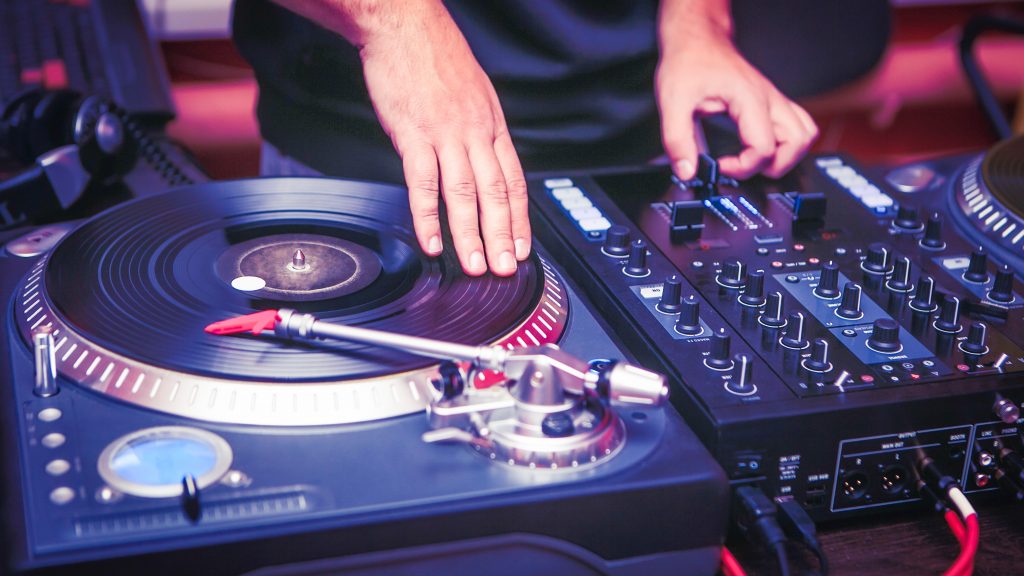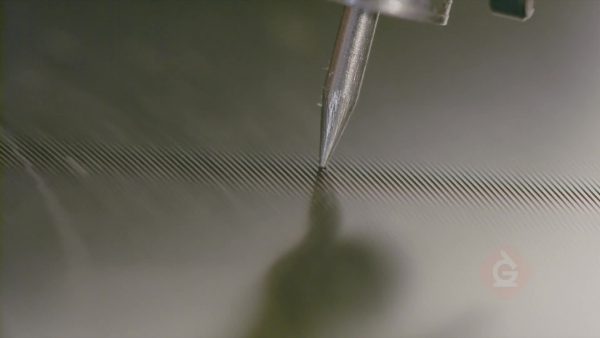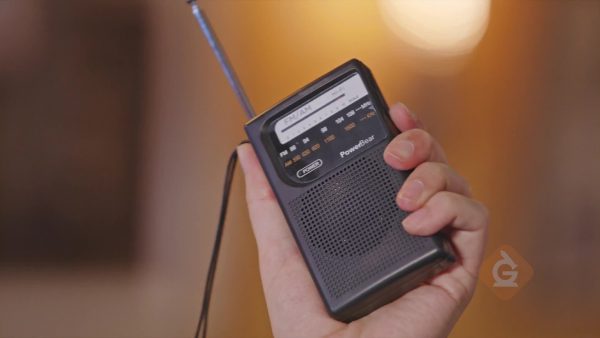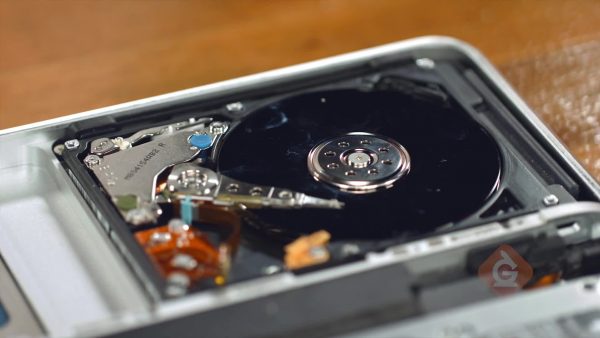
Electronic signals allow computers and other electronic devices to take in, send out, and process the information they need to function. Computers and other digital devices send and store information as a series of digits like 1s and 0s. We call signals made of only two digits, digital signals.
To better understand digital vs. analog signals…
LET’S BREAK IT DOWN!
A sound wave is an analog signal.

Sound waves are created by vibrations, and sound can be recorded on vinyl records with grooves that cause the needle on a record player to vibrate. Those vibrations are then amplified to play back the sound that was originally recorded. The pitch, or frequency, of that sound can take on a wide range of values. In other words, the frequency of that sound is a continuous variable. The signal produced by playing a record can be represented as a smooth sound wave that describes exactly how the sound changes over time. This is known as an analog signal. The sound wave produced by the record player is analogous, or similar, to the original sound wave that was recorded.
Analog signals can be converted to digital signals.

Modern computers are controlled by digital, not analog signals. Digital signals are made up of values, or digits, that can have only certain values. The most basic instructions controlling a computer are made up of a series of 1s and 0s. Because computers often need to handle analog signals, like a digital thermometer reading your body temperature, we need to be able to convert analog signals to digital signals. This happens through a process called sampling. To convert the sound wave produced by a record player into a digital signal, we would take the value for the wave height at evenly spaced time intervals and convert those values into a digital code of 1s and 0s. Once the sound wave is converted to a digital signal, it can be stored and transmitted by a computer. This is what allows us to download, play, and stream music from our smartphones.
Sending digital signals

Analog and digital signals can both be transmitted through the air using electromagnetic waves, like radio waves. AM and FM radio stations broadcast analog waves, and these signals deteriorate as they travel over long distances. That’s why you start to hear static as you get too far away from a certain station. Digital signals are transmitted as short pulses that represent different digits. Because these signals can contain only certain values, like 1s and 0s, they can easily be corrected to remove static. Satellite TV, satellite radio, WiFi, and cell phones all rely on digital signal transmission.
Storing digital information

Along with transmitting and receiving digital signals, computers also store information in digital form. As examples, hard drives encode 1s and 0s as tiny areas that are magnetized or demagnetized, and flash drives encode data based on electrical charges. In the same way that digital signal transmissions can be corrected to remove static, digitally stored data can be corrected when it degrades over time. Devices that send data to your computer (like your keyboard or mouse) send these instructions as digital code. And devices like your monitor that provide output from your computer convert digital code into a form that makes sense to you as the user.
Career Spotlight: Computer Programming

Everything that happens in a computer is controlled by binary code—the series of 1s and 0s that tells the computer what to do and when to do it. This binary code provides the foundation for websites, apps, computer games, and all other computer programs. These programs help us do almost everything in our everyday lives, so there are countless career opportunities for software programmers. Most of these professionals don’t work directly with binary code, though. Instead, they use programming languages that make it much easier for the programmers to code instructions for the computer. And the software programs these coders create make it easy for people and computers to communicate with each other to help us get things done.
DIGITAL VS. ANALOG SIGNALS VOCABULARY
DIGITAL VS. ANALOG SIGNALS DISCUSSION QUESTIONS
What is the main difference between analog and digital signals?
How can an analog signal be converted into a digital signal?
How does binary code control the processes in a computer?
What is the main advantage that digital signals have over analog signals?
Which type of signal would be best for NASA to use to send signals into space to be received by extraterrestrial life? Why?
If you were a singer recording a song, what factors would you need to consider when deciding to record with analog or digital equipment?
Skip, I will use a 3 day free trial
Enjoy your free 30 days trial





